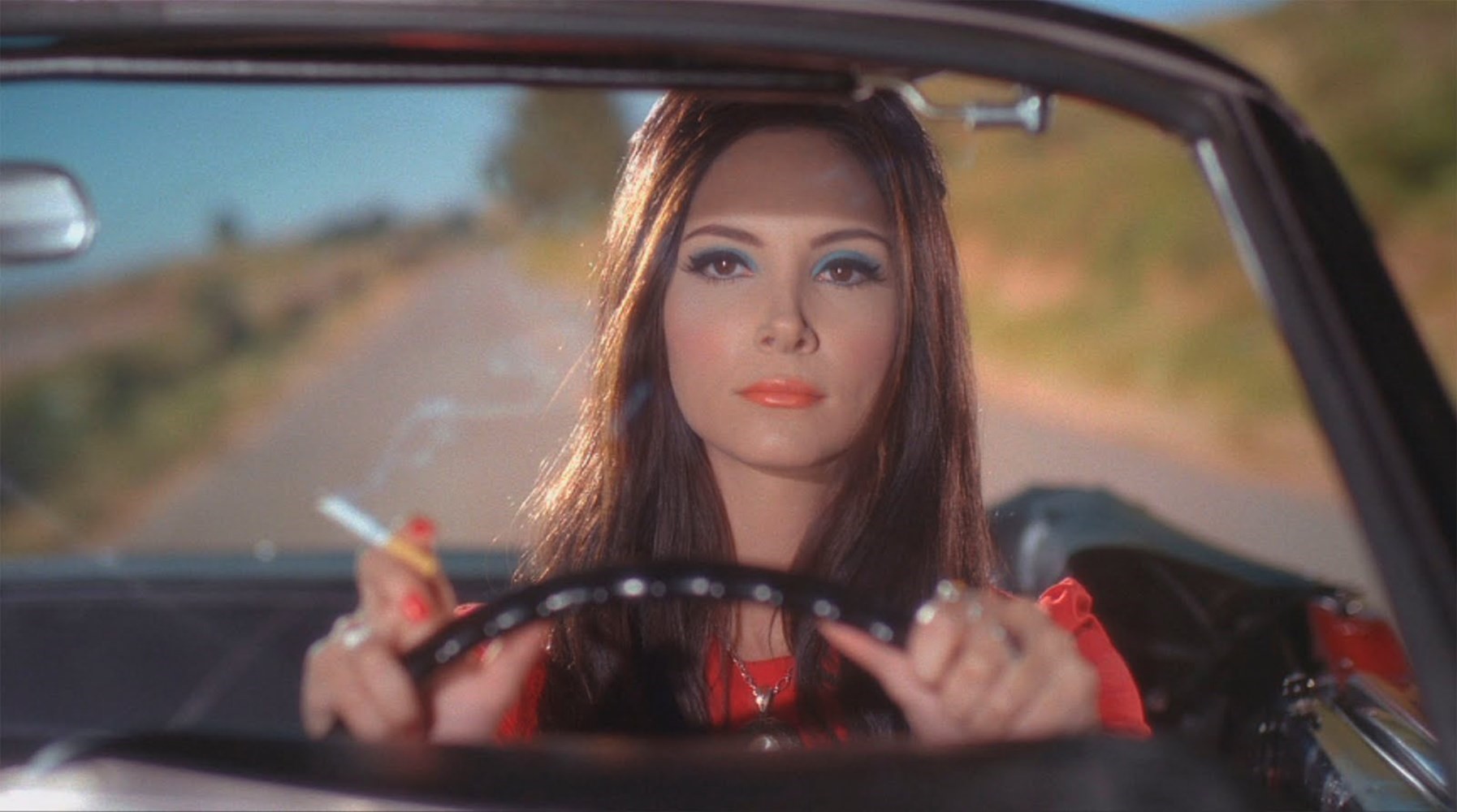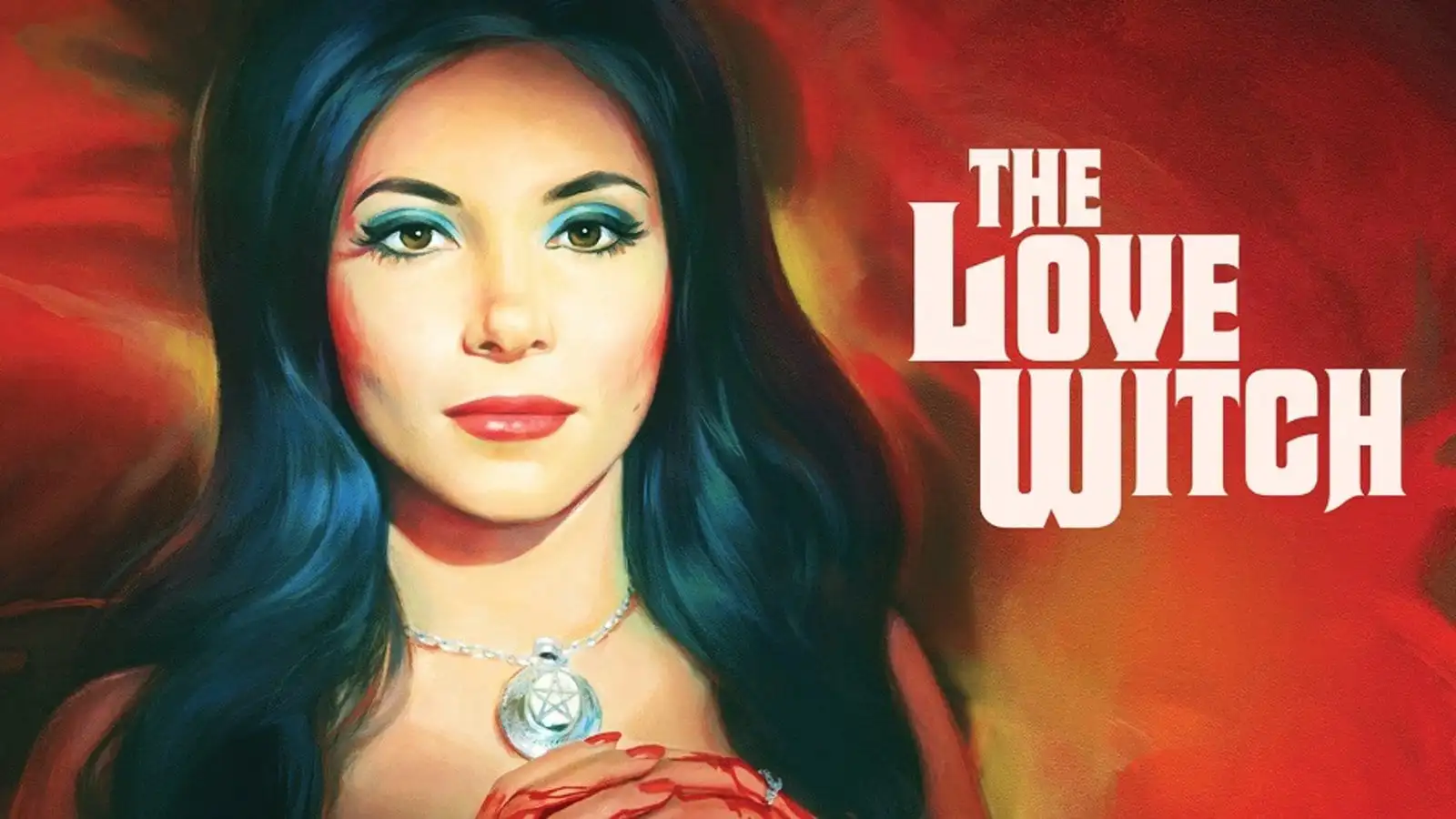By Efstathia Valavani,
Anna Biller’s 2016 film, The Love Witch, starring Samantha Robinson in the role of Elaine, is centred on women’s desires and the manifestations of love they seek. The film depicts the classic femme fatale archetype and demonstrates the feminine seduction through the female gaze, using a witch that is in continuous search for true love. The film is created by a woman and is intended for women to watch. The focus of the work is on female relationships with both men and women, as well as the feelings a woman experiences in a relationship. Feminist ideology is the ground on which the film is established and the element that allows the director to present to us what society considers as a taboo, in the most normal and gentle ways.
The story follows Elaine, a beautiful woman who considers love to be the most important thing she can have in her life and strives in any way she can to find it. In the opening scene, she declares her views about men’s immeasurable sensitivity and admits that she has tried to learn all the ways to handle them properly due to their fragility. Later, and without even trying to obscure the fact that she is a witch, she also openly declares to Trish that she is willing to give the men what they want and treat them how they want to be treated, in order to be loved. According to her, to be loved by somebody the way she loves him is the ultimate goal of her life and the main component for her real bliss.

She claims that her ex-husband, who died mysteriously, left her because she was not aware of the very few things men need in order to cling to a woman for life. As the plot continues, she finds out that men are actually too sensitive for love. Bewitched by her, in order to experience the same love that she experiences, they become obsessed with her, and die degrading and humiliating deaths. “Men are known for being much less emotional than women, but, in my experience, they’re much more emotional. And that’s why they won’t, or can’t, open that gate –it would destroy them”, says Biller to John Patterson, as honestly as she communicates this idea in her movie. As the movie suggests, it is the men that cannot deal with their emotions in controlled ways, rather than the women.
The mise-en-scene and the bright colours she uses in the film, inspired by the 1960s and the 1970s, contrast the sinister and witchy elements of the film and simultaneously move the audience into another era. Elaine, despite being a modern-day woman, dresses and does her make up as if she just leaped out of the cover of a vintage magazine that claims to reveal some secret advice on how a woman should please her man. As a matter of fact, the aesthetics of that era, line up with the witch’s opinions on gender dynamics and relations, since she strives to enchant men, using every sexual and non-sexual power she possesses. The protagonist is under the influence of patriarchal indoctrinations that have survived in the 21st century, and have been turning women to objects of satisfaction for centuries. The main inspirations for the film, Biller herself says to Barend de Voogd, are “female characters that are driven insane trying to constantly negotiate their place in the world”.

Although men are easy to please and the witch is willing to make any sacrifice for her love to be reciprocated, she never really manages to get what she wants until the end of the film. The intensity of Wayne’s and Richard’s emotions bore her and make her feel uncomfortable and serve as instances of the distinguishing male inability to love. The two men cannot even handle the feeling and die shortly after falling in love, either by suicide, or by just feeling too much. On the other hand, Griff is the lover that does not allow himself to experience the same feelings in such enormous ways, which turns Elaine against him and she murders him in a scene that feels like a spiritual ceremony for her. By murdering Griff, she frees herself from her infuriating anxiety regarding love, realising that no man will ever be capable of giving her the love she wants or experience the same amount of love in the same way that she does without being destroyed by it.
All in all, the story of The Love Witch is a story of female liberation from societal stereotypes co-occurring with patriarchal notions that control how a woman should act. One cannot be rescued from male-dominated norms by bringing all male fantasy to life through sex, or by trying to appeal to the male gaze in any way possible. In order to be freed, one has to appeal to her own senses and listen to herself. In killing Griff, Robinson’s character kills her repressive thoughts, as well as the smoothing feeling that she is either not enough, or too much for anyone to align with her.
References
- Η μάγισσα του έρωτα. IMDB. Available here
- The Love Witch director Anna Biller: ‘I’m in conversation with the pornography all around us’. The Guardian. Available here
- BAREND DE VOOGD INTERVIEW WITH ANNA BILLER. Life of a Star. Available here




